Noise Reduction of an Extinguishing Nozzle Using the Response Surface Method
Abstract
:1. Introduction
2. Experiment
3. Numerical Analysis
4. Design of Experiments
5. Genetic Algorithm
6. Validation of CFD Results
6.1. Validaition
6.2. Reference Model
7. Optimal Design Results
8. Conclusions
Author Contributions
Funding
Acknowledgments
Conflicts of Interest
References
- Moore, T.A.; Yamada, N. Nitrogen Gas as a Halon Replacement. In Proceedings of the Halon Options Technical Working Conference, Albuquerque, NM, USA, 12–14 May 1998; pp. 330–338. [Google Scholar]
- Saito, N.; Saso, Y.; Ogawa, Y.; Otsu, Y.; Kikui, H. Fire Extinguishing Effect of Mixed Agents of Halon 1301 and Inert Gases. Fire Saf. Sci. 1997, 5, 901–910. [Google Scholar] [CrossRef]
- Saito, N.; Ogawa, Y.; Saso, Y.; Liao, C.; Sakei, R. Flame-Extinguishing Concentrations and Peak Concentrations of N2, Ar, CO2 and Their Mixtures for Hydrocarbon Fuels. Fire Saf. Sci. 1996, 27, 185–200. [Google Scholar] [CrossRef]
- Su, J.Z.; Kim, A.K.; Crampton, G.P.; Liu, Z. Fire Suppression with Inert Gas Agents. Fire Prot. Eng. 2001, 11, 72–87. [Google Scholar] [CrossRef]
- Fire Drill Knocks ING Bank’s Data Centre Offline, BBC NEWS Homepage. Available online: https://www.bbc.com/news/technology-37337868 (accessed on 12 September 2016).
- Mann, M.T.; Coll, M. Potential Problems with Computer Hard Disks When Fire Extinguishing Systems are Released; A White Paper issued by Siemens; Siemens Switzerland Press: Zug, Switzerland, 2011. [Google Scholar]
- Dutta, T.; Barnard, A.R. Performance of Hard Disk Drives in High Noise Environments. Noise Control Eng. J. 2017, 65, 386–395. [Google Scholar] [CrossRef]
- Nickerson, M.L.; Green, K.; Pai, N. Tonal Noise Sensitivity in Hard Drives. Proc. Mtgs. Acoust. 2013, 20, 040006. [Google Scholar] [CrossRef]
- Fisher, R.A. The Design of Experiments, 5th ed.; Hafner Publishing Company Press: New York, NY, USA, 1949. [Google Scholar]
- Pei, Z.; Yu, C. Prediction of the Vortex Yarn Tenacity from Some Process and Nozzle Parameters Based on Numerical Simulation and Artificial Neural Network. Text. Res. J. 2011, 81, 1796–1807. [Google Scholar]
- Corriveau, G.; Guilbault, R.; Tahan, A. Genetic Algorithms and Finite Element Coupling for Mechanical Optimization. Adv. Eng. Softw. 2010, 41, 422–426. [Google Scholar] [CrossRef]
- Palacz, M.; Smolka, J.; Kus, W.; Fic, A.; Bulinski, Z.; Nowak, A.J.; Banasiak, K.; Hafner, A. CFD-Based Shape Optimisation of a CO2 Two-Phase Ejector Mixing Section. Appl. Therm. Eng. 2016, 95, 62–69. [Google Scholar] [CrossRef]
- Kurimoto, N.; Suzuki, M.; Yoshino, M.; Nishijima, Y. Response Surface Modeling of Diesel Spray Parameterized by Geometries Inside of Nozzle. SAE Tech. Pap. 2011. No. 2011-01-0390. [Google Scholar] [CrossRef]
- Cheng, C.; Bao, F.T.; Xu, H. Optimization Design for Contour of Pintle Nozzle in Solid Rocket Motor Based on Response Surface Method. Adv. Mater. Res. 2014, 1016, 640–645. [Google Scholar] [CrossRef]
- Viswanathan, K. Nozzle Shaping for Reduction of Jet Noise from Single Jets. AIAA J. 2005, 43, 1008–1022. [Google Scholar] [CrossRef]
- Crouch, R.W.; Coughlin, C.L.; Paynter, G.C. Nozzle Exit Flow Profile Shaping for Jet Noise Reduction. J. Aircr. 1977, 14, 860–867. [Google Scholar] [CrossRef]
- Park, I.S.; Sohn, C.H.; Lee, S.; Song, H.; Oh, J. Flow-Induced Noise in a Suction Nozzle with a Centrifugal Fan of a Vacuum Cleaner and Its Reduction. Appl. Acoust. 2010, 71, 460–469. [Google Scholar] [CrossRef]
- Ostergaard, P.B. Determination of Sound-power Level of Air-conditioning Units. Noise Control 1957, 3, 35–56. [Google Scholar] [CrossRef]
- National Fire Agency (NFA). Act on Installation, Maintenance and Safety Management of Fire Fighting Facilities, NFSC 107A. Available online: http://law.go.kr/admRulLsInfoP.do?admRulSeq=2000000079343 (accessed on 20 August 2012).
- Korea Standards Association (KSA). Acoustic Power Level Measurement for Noise in Air Terminal Units, Air Terminal Units, Dampers and Valves in the Reverberation Room, KS I ISO 5135. Available online: https://www.standard.go.kr/KSCI/standardIntro/getStandardSearchView.do?menuId=919&topMenuId=502&upperMenuId=503&ksNo=KSIISO5135&tmprKsNo=KSIISO5135&reformNo=02 (accessed on 31 December 2014).
- Magagnato, F.; Sorgüven, E.; Gabi, M. Far Field Noise Prediction by Large Eddy Simulation and Ffowcs Williams Hawkings Analogy. In Proceedings of the 9th AIAA/CEAS Aeroacoustics Conference and Exhibit, Hilton Head, SC, USA, 12–14 May 2003; p. 3206. [Google Scholar]
- Ihme, M.; Bodony, D.; Pitsch, H. Prediction of Combustion-Generated Noise in Non-Premixed Turbulent Jet Flames Using LES. In Proceedings of the 12th AIAA/CEAS Aeroacoustics Conference (27th AIAA Aeroacoustics Conference), Cambridge, MA, USA, 8 May 2006; p. 2614. [Google Scholar]
- Kaltenbacher, M.; Escobar, M.; Becker, S.; Ali, I. Numerical Simulation of Flow-induced Noise Using LES/SAS and Lighthill’s Acoustic Analogy. Int. J. Numer. Methods Fluids 2010, 63, 1103–1122. [Google Scholar] [CrossRef]
- Lighthill, M.J. On Sound Generated Aerodynamically I. General Theory. Proc. R. Soc. Lond. Ser. A Math. Phys. Sci. 1952, 211, 564–587. [Google Scholar]
- Ffowcs Williams, J.E.; Hawkings, D.L. Sound Generation by Turbulence and Surfaces in Arbitrary Motion. Philos. Trans. R. Soc. Lond. Ser. A Math. Phys. Sci. 1969, 264, 321–342. [Google Scholar] [CrossRef]
- Lighthill, M.J. On Sound Generated Aerodynamically II. Turbulence as a Source of Sound. Proc. R. Soc. Lond. Ser. A Math. Phys. Sci. 1954, 222, 1–32. [Google Scholar]
- Gourieroux, C.; Laurent, J.P.; Scaillet, O. Sensitivity Analysis of Values at Risk. J. Empir. Financ. 2000, 7, 225–245. [Google Scholar] [CrossRef]
- Giunta, A.; Wojtkiewicz, S.; Eldred, M. Overview of Modern Design of Experiments Methods for Computational Simulations. In Proceedings of the 41st Aerospace Sciences Meeting and Exhibit, Reno, NV, USA, 6–9 January 2003; p. 649. [Google Scholar]
- McKay, M.D.; Beckman, R.J.; Conover, W.J. A Comparison of Three Methods for Selecting Values of Input Variables in the Analysis of Output from a Computer Code. Technometrics 2000, 42, 55–61. [Google Scholar] [CrossRef]
- Carroll, C.W. The Created Response Surface Technique for Optimizing Nonlinear, Restrained Systems. Oper. Res. 1961, 9, 169–184. [Google Scholar] [CrossRef]
- Holland, J.H. Genetic Algorithms. Sci. Am. 1992, 267, 66–73. [Google Scholar] [CrossRef]
- Goldberg, D.E.; Holland, J.H. Genetic Algorithms and Machine Learning. Mach. Learn. 1988, 3, 95–99. [Google Scholar] [CrossRef]
- Renner, G.; Ekárt, A. Genetic Algorithms in Computer Aided Design. Comput.-Aided Des. 2003, 35, 709–726. [Google Scholar] [CrossRef]
- Srivastava, A.; Singh, V.; Haque, S.; Pandey, S.; Mishra, M.; Jawed, A.; Tripathi, C.K.M. Response Surface Methodology-Genetic Algorithm Based Medium Optimization, Purification, and Characterization of Cholesterol Oxidase from Streptomyces Rimosus. Sci. Rep. 2018, 8, 10913. [Google Scholar] [CrossRef]
- Powell, A. On the Noise Emanating from a Two-Dimensional Jet Above the Critical Pressure. Aeronaut. Q. 1953, 4, 103–122. [Google Scholar] [CrossRef]
- Norum, T.D.; Seiner, J.M. Broadband Shock Noise from Supersonic Jets. AIAA J. 1982, 20, 68–73. [Google Scholar] [CrossRef]
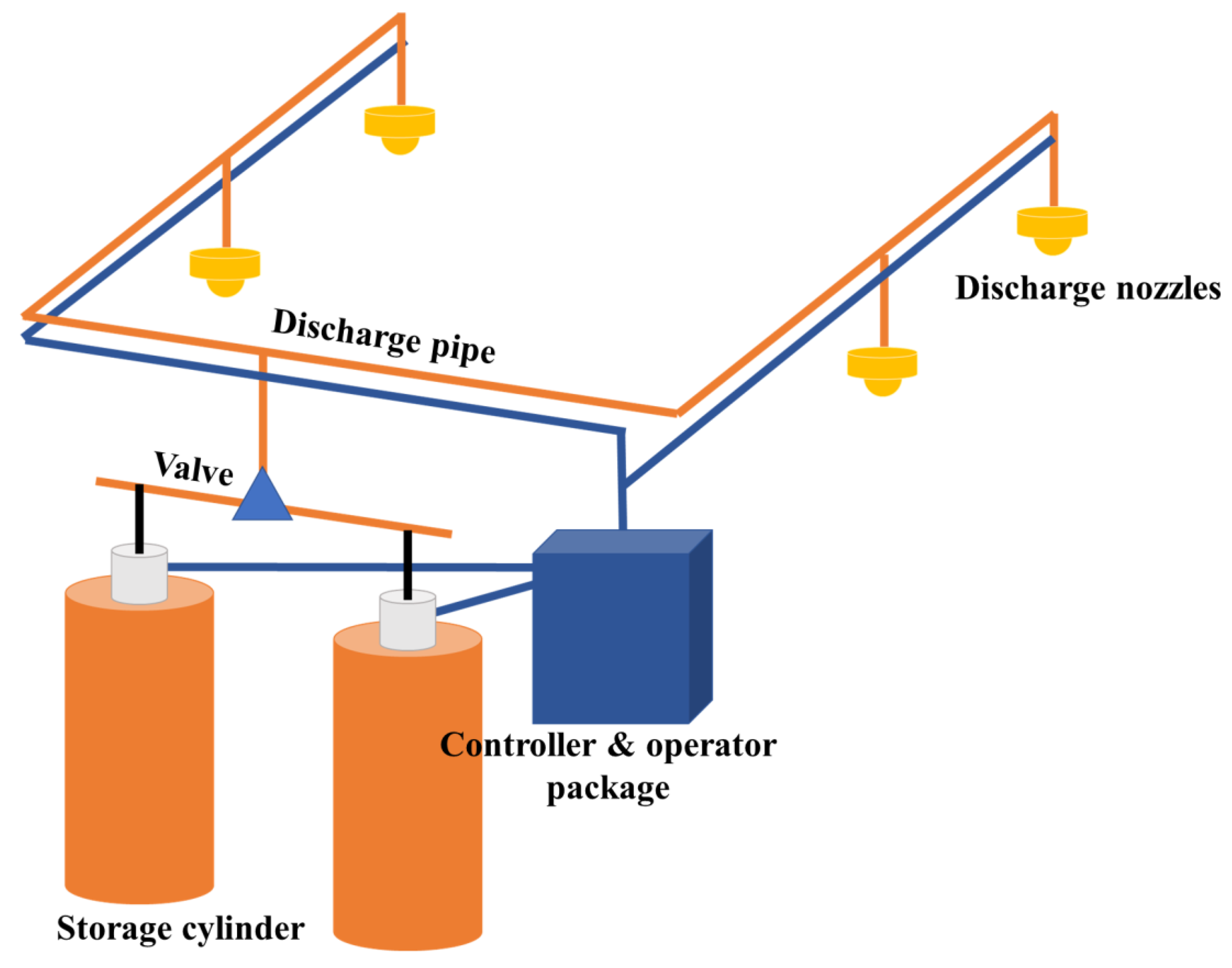
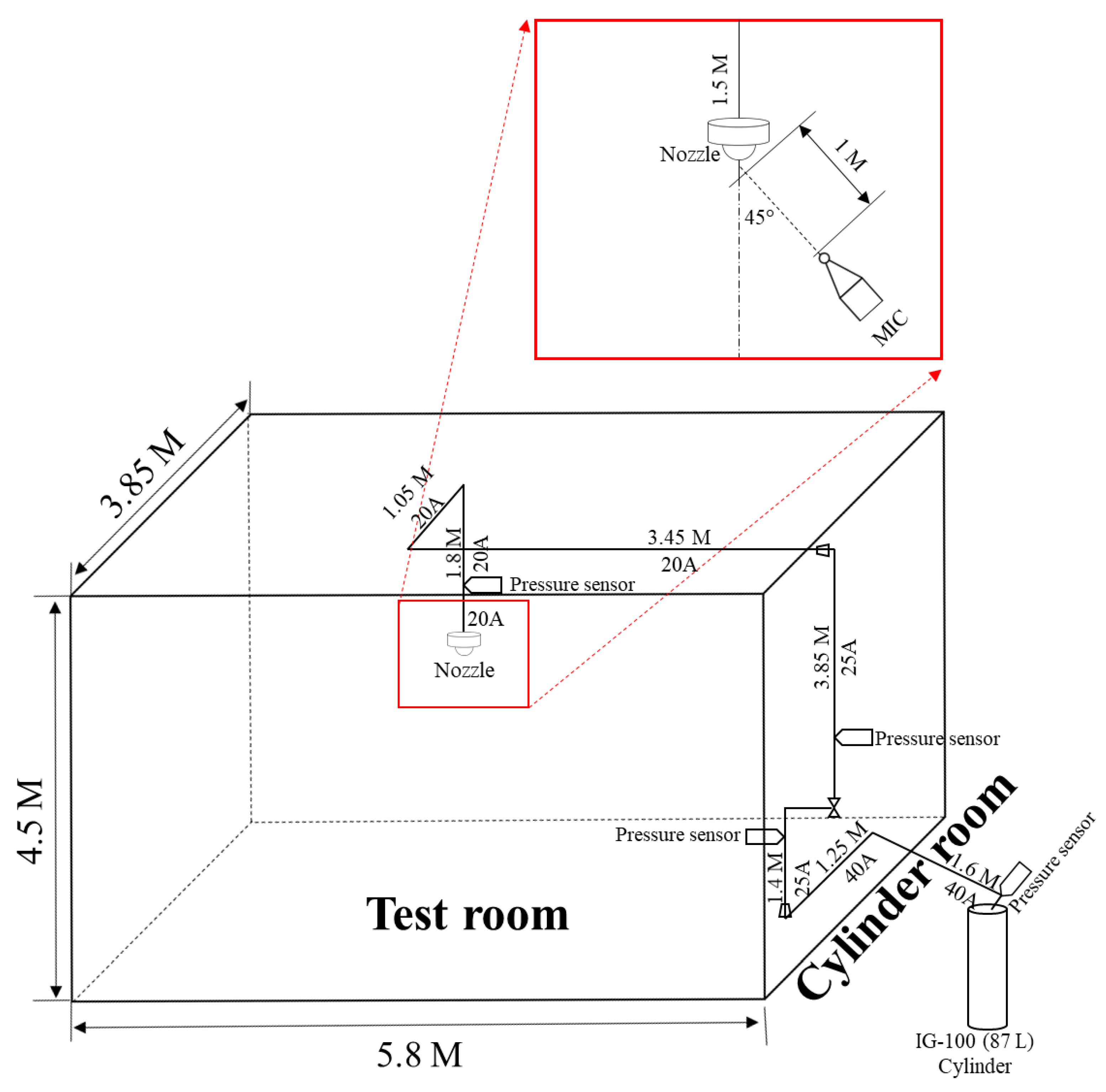

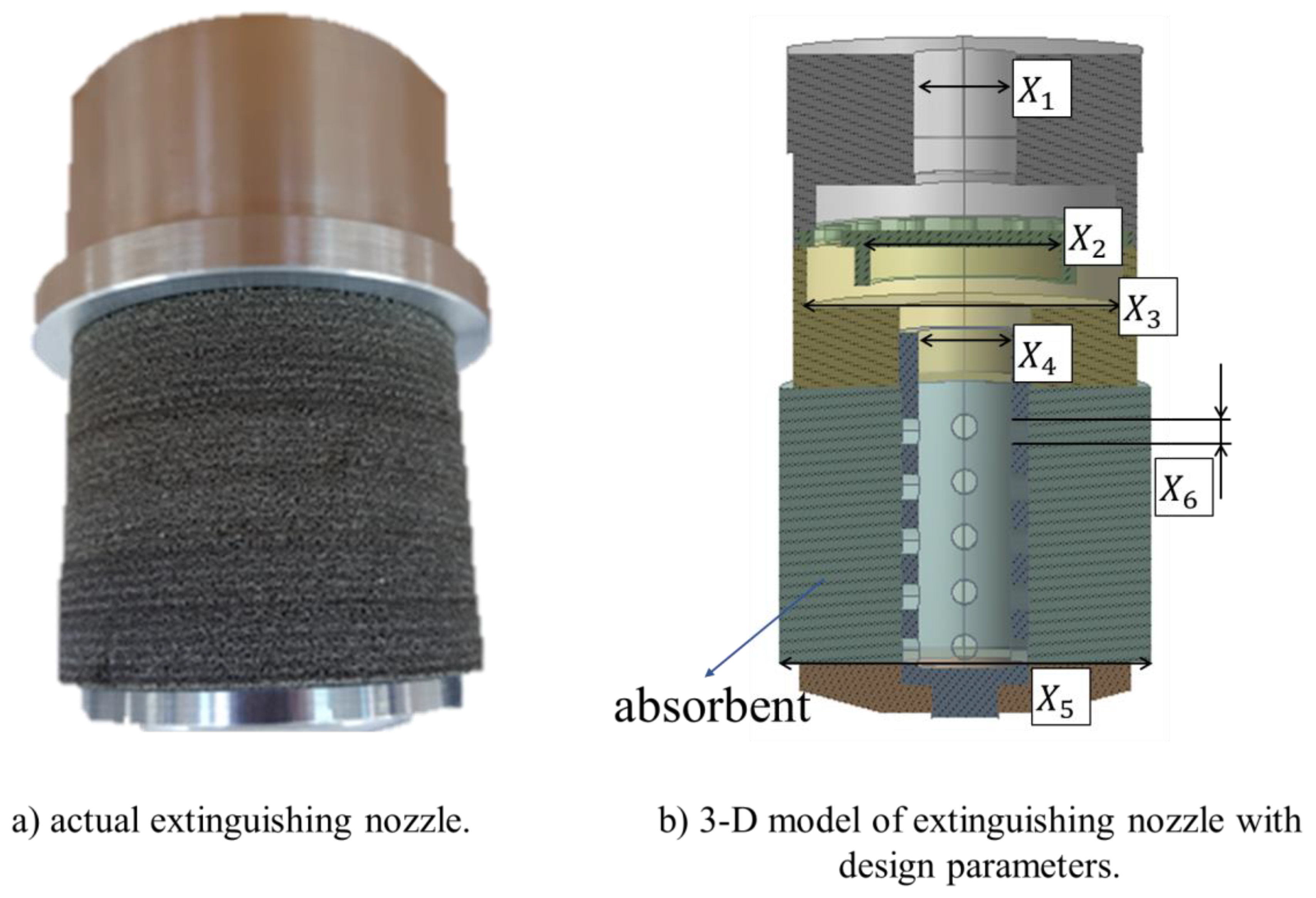


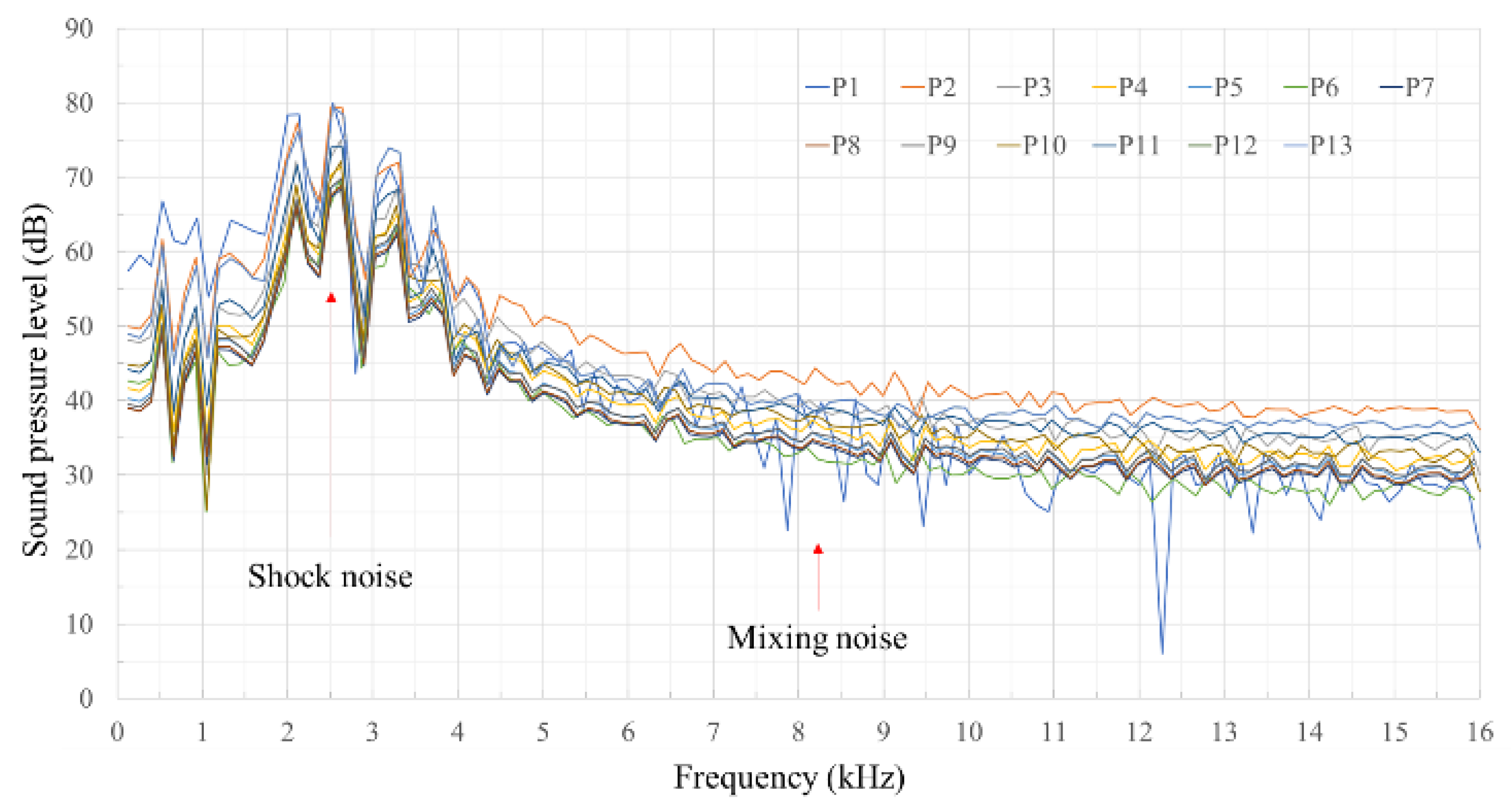
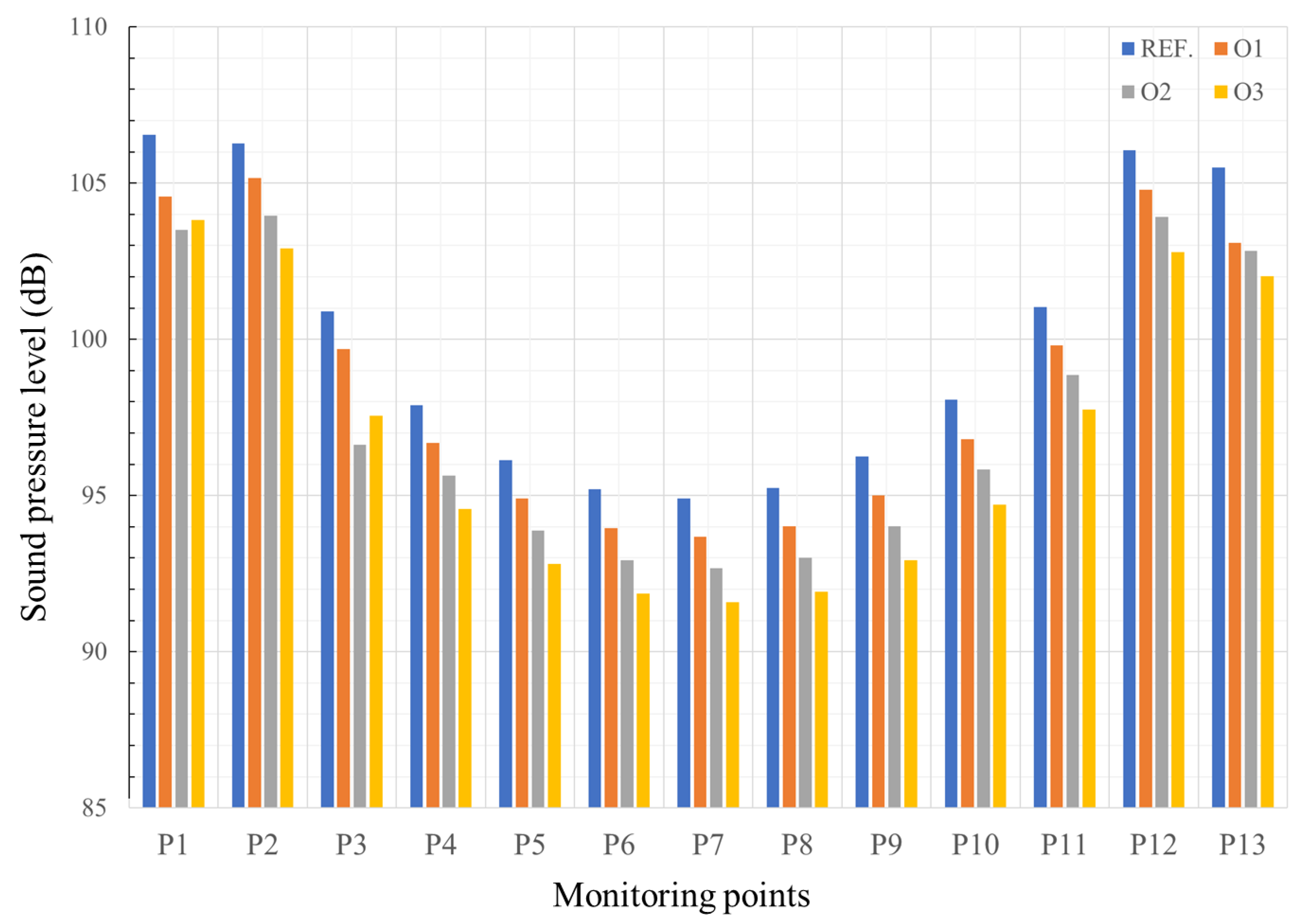
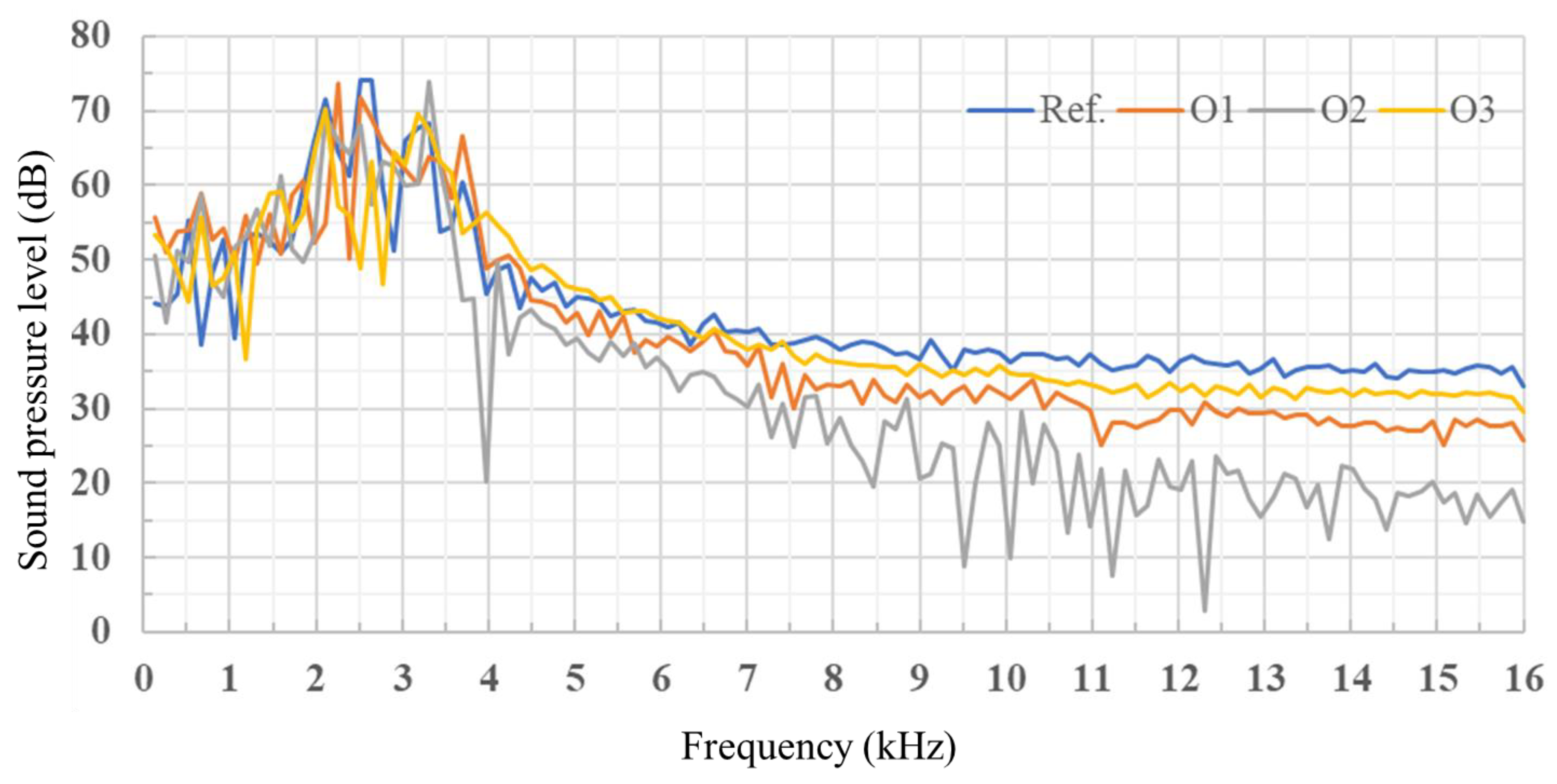
| Description | Value |
|---|---|
| Turbulence model | Large eddy simulation |
| Acoustic model | FW-H |
| Far-field density [kg/m3] | 1.225 |
| Far-field sound speed [m/s] | 340 |
| reference acoustic pressure [Pa] | 2 × 10−5 |
| Frequency range [kHz] | 0–16 |
| Inlet pressure [MPa] | 5.95 |
| Inlet temperature [K] | 103.25 |
| Name | X1 | X2 | X3 | X4 | X5 | X6 |
|---|---|---|---|---|---|---|
| 1 | 25 | 17 | 24 | 17 | 67 | 4.5 |
| 2 | 22.5 | |||||
| 3 | 27.5 | |||||
| 4 | 25 | 15.3 | ||||
| 5 | 18.7 | |||||
| 6 | 17 | 21.6 | ||||
| 7 | 26.4 | |||||
| 8 | 24 | 15.3 | ||||
| 9 | 18.7 | |||||
| 10 | 17 | 60.3 | ||||
| 11 | 73.7 | |||||
| 12 | 67 | 4.05 | ||||
| 13 | 4.95 | |||||
| 14 | 23.55495 | 16.01736 | 22.61275 | 16.01736 | 63.12726 | 4.23989 |
| 15 | 26.44505 | 16.01736 | 4.76011 | |||
| 16 | 23.55495 | 17.98264 | 4.76011 | |||
| 17 | 26.44505 | 17.98264 | 4.23989 | |||
| 18 | 23.55495 | 16.01736 | 25.38725 | 4.76011 | ||
| 19 | 26.44505 | 16.01736 | 4.23989 | |||
| 20 | 23.55495 | 17.98264 | 4.23989 | |||
| 21 | 26.44505 | 17.98264 | 4.76011 | |||
| 22 | 23.55495 | 16.01736 | 22.61275 | 17.98264 | 4.76011 | |
| 23 | 26.44505 | 16.01736 | 4.23989 | |||
| 24 | 23.55495 | 17.98264 | 4.23989 | |||
| 25 | 26.44505 | 17.98264 | 4.76011 | |||
| 26 | 23.55495 | 16.01736 | 25.38725 | 4.23989 | ||
| 27 | 26.44505 | 16.01736 | 4.76011 | |||
| 28 | 23.55495 | 17.98264 | 4.76011 | |||
| 29 | 26.44505 | 17.98264 | 4.23989 | |||
| 30 | 23.55495 | 16.01736 | 22.61275 | 16.01736 | 70.87274 | 4.76011 |
| 31 | 26.44505 | 16.01736 | 4.23989 | |||
| 32 | 23.55495 | 17.98264 | 4.23989 | |||
| 33 | 26.44505 | 17.98264 | 4.76011 | |||
| 34 | 23.55495 | 16.01736 | 25.38725 | 4.23989 | ||
| 35 | 26.44505 | 16.01736 | 4.76011 | |||
| 36 | 23.55495 | 17.98264 | 4.76011 | |||
| 37 | 26.44505 | 17.98264 | 4.23989 | |||
| 38 | 23.55495 | 16.01736 | 22.61275 | 17.98264 | 4.23989 | |
| 39 | 26.44505 | 16.01736 | 4.76011 | |||
| 40 | 23.55495 | 17.98264 | 4.76011 | |||
| 41 | 26.44505 | 17.98264 | 4.23989 | |||
| 42 | 23.55495 | 16.01736 | 25.38725 | 4.76011 | ||
| 43 | 26.44505 | 16.01736 | 4.23989 | |||
| 44 | 23.55495 | 17.98264 | 4.23989 | |||
| 45 | 26.44505 | 17.98264 | 4.76011 |
| Name | X1 | X2 | X3 | X4 | X5 | X6 |
|---|---|---|---|---|---|---|
| 1 | 24.33333 | 17.22667 | 23.78667 | 15.41333 | 72.36 | 4.58 |
| 2 | 25.33333 | 17.98222 | 26.13333 | 16.39556 | 61.64 | 4.64 |
| 3 | 22.55556 | 17.07556 | 23.14667 | 17.07556 | 66.70222 | 4.86 |
| 4 | 24.77778 | 15.71556 | 22.93333 | 16.47111 | 61.04444 | 4.36 |
| 5 | 22.77778 | 15.33778 | 23.36 | 17.60444 | 72.65778 | 4.3 |
| 6 | 27.11111 | 15.56444 | 24.64 | 16.24444 | 65.80889 | 4.94 |
| 7 | 24.66667 | 17.52889 | 22.4 | 16.62222 | 64.91556 | 4.24 |
| 8 | 27 | 18.05778 | 24 | 16.16889 | 72.06222 | 4.62 |
| 9 | 23.44444 | 17.30222 | 25.49333 | 17.30222 | 72.95556 | 4.78 |
| 10 | 23.11111 | 16.09333 | 24.96 | 18.20889 | 70.27556 | 4.6 |
| 11 | 23.77778 | 16.32 | 26.24 | 17.98222 | 67 | 4.66 |
| 12 | 23 | 17.60444 | 24.42667 | 15.79111 | 64.02222 | 4.52 |
| 13 | 24.22222 | 17.45333 | 21.97333 | 15.48889 | 67.59556 | 4.76 |
| 14 | 25.55556 | 16.24444 | 26.02667 | 18.05778 | 65.51111 | 4.16 |
| 15 | 23.66667 | 18.66222 | 22.61333 | 17.22667 | 70.87111 | 4.06 |
| 16 | 26.44444 | 15.41333 | 24.10667 | 15.33778 | 71.46667 | 4.18 |
| 17 | 26.22222 | 16.84889 | 25.81333 | 15.64 | 66.40444 | 4.8 |
| 18 | 25.22222 | 16.77333 | 21.65333 | 17.83111 | 73.55111 | 4.14 |
| 19 | 22.88889 | 18.36 | 23.68 | 18.36 | 66.10667 | 4.34 |
| 20 | 22.66667 | 16.01778 | 23.04 | 17.15111 | 68.48889 | 4.88 |
| 21 | 24.11111 | 18.13333 | 22.08 | 15.71556 | 63.42667 | 4.72 |
| 22 | 26.55556 | 16.92444 | 23.25333 | 17.37778 | 60.74667 | 4.22 |
| 23 | 27.22222 | 18.51111 | 22.82667 | 18.28444 | 68.19111 | 4.44 |
| 24 | 23.22222 | 16.54667 | 24.32 | 16.84889 | 62.83111 | 4.28 |
| 25 | 25.77778 | 18.58667 | 26.34667 | 16.77333 | 69.68 | 4.4 |
| 26 | 25.11111 | 17.37778 | 25.92 | 15.86667 | 71.16889 | 4.08 |
| 27 | 26.11111 | 15.94222 | 22.18667 | 16.01778 | 68.78667 | 4.56 |
| 28 | 25.44444 | 18.28444 | 25.70667 | 16.09333 | 62.53333 | 4.1 |
| 29 | 27.33333 | 15.79111 | 23.46667 | 18.43556 | 65.21333 | 4.46 |
| 30 | 23.88889 | 17 | 25.28 | 17.68 | 71.76444 | 4.2 |
| 31 | 25.88889 | 16.62222 | 23.89333 | 16.69778 | 63.12889 | 4.26 |
| 32 | 26.33333 | 16.39556 | 25.17333 | 15.56444 | 69.38222 | 4.5 |
| 33 | 24.44444 | 15.86667 | 25.38667 | 17.45333 | 70.57333 | 4.9 |
| 34 | 26.66667 | 16.47111 | 22.72 | 16.32 | 67.89333 | 4.38 |
| 35 | 24 | 17.75556 | 22.50667 | 18.13333 | 62.23556 | 4.74 |
| 36 | 23.55556 | 18.20889 | 24.85333 | 17.90667 | 64.61778 | 4.82 |
| 37 | 26.88889 | 17.83111 | 24.74667 | 18.58667 | 69.97778 | 4.42 |
| 38 | 26.77778 | 16.69778 | 22.29333 | 18.51111 | 73.25333 | 4.54 |
| 39 | 25 | 17.68 | 21.76 | 16.54667 | 61.93778 | 4.32 |
| 40 | 27.44444 | 17.90667 | 24.21333 | 18.66222 | 63.72444 | 4.92 |
| 41 | 24.88889 | 15.64 | 23.57333 | 17 | 64.32 | 4.68 |
| 42 | 24.55556 | 17.15111 | 21.86667 | 16.92444 | 67.29778 | 4.7 |
| 43 | 25.66667 | 16.16889 | 24.53333 | 17.75556 | 60.44889 | 4.48 |
| 44 | 23.33333 | 15.48889 | 25.6 | 17.52889 | 61.34222 | 4.12 |
| 45 | 26 | 18.43556 | 25.06667 | 15.94222 | 69.08444 | 4.84 |
| Exp. Results | CFD Results | Relative Error [%] | |
|---|---|---|---|
| Inlet pressure [MPa] | 5.954 | 5.95 | 0.0689 |
| Inlet temp. [K] | 291.667 | 294.0 | 0.7999 |
| OSPL [dB] | 102.4 | 103.249 | 0.8291 |
| Name | X1 | X2 | X3 | X4 | X5 | X6 |
|---|---|---|---|---|---|---|
| Reference Design | 25 | 17 | 24 | 17 | 67 | 4.5 |
| Optimum Design 1 | 24.439 | 18.207 | 21.6 | 16.071 | 73.7 | 4.6391 |
| Optimum Design 2 | 22.638 | 18.17 | 21.662 | 16.689 | 72.613 | 4.4744 |
| Optimum Design 3 | 26.978 | 18.685 | 23.777 | 15.858 | 72.233 | 4.4122 |
© 2019 by the authors. Licensee MDPI, Basel, Switzerland. This article is an open access article distributed under the terms and conditions of the Creative Commons Attribution (CC BY) license (http://creativecommons.org/licenses/by/4.0/).
Share and Cite
Kim, Y.-H.; Lee, M.; Hwang, I.-J.; Kim, Y.-J. Noise Reduction of an Extinguishing Nozzle Using the Response Surface Method. Energies 2019, 12, 4346. https://doi.org/10.3390/en12224346
Kim Y-H, Lee M, Hwang I-J, Kim Y-J. Noise Reduction of an Extinguishing Nozzle Using the Response Surface Method. Energies. 2019; 12(22):4346. https://doi.org/10.3390/en12224346
Chicago/Turabian StyleKim, Yo-Hwan, Myoungwoo Lee, In-Ju Hwang, and Youn-Jea Kim. 2019. "Noise Reduction of an Extinguishing Nozzle Using the Response Surface Method" Energies 12, no. 22: 4346. https://doi.org/10.3390/en12224346




